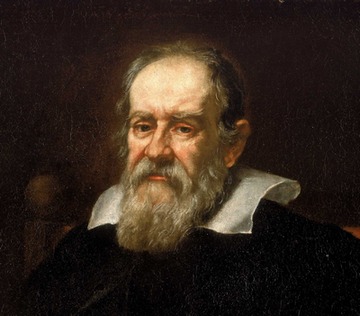Galilean Relativity

Content:
The great scientist of the Renaissance, the inventor of the first telescope, Galileo Galilei made many scientific discoveries in his life, both in astronomy and physics, mathematics, and other sciences. The classical principle of Galilean relativity is among them. It is the cornerstones of modern physics
Definition
Let us try to formulate the principle Galilean relativity as simple as possible. All mechanical processes and phenomena occur equally in inertial reference systems according to it.
What is inertial reference system? In classical physics, it is understood as a system where all bodies move linearly and rectilinearly. A simple example of an inertial system can be a train moving on rails, or on a global scale – our planet orbiting the Sun. By the way, all Newton’s laws also refer to the inertial reference systems.
Usage
But let us return to the principle of Galilean relativity, and more precisely to its practical application. Imagine that you are riding a train or sailing a ship. If you would make some simple physical experiments, toss the ball, for instance, you would see that the results of these actions will be exactly the same as if you just stood on the ground. (The ball in the train will fall down with the same trajectory as just in the park.). In other words, both the ship and the train are closed inertial reference systems, and the mechanical processes inside them proceed according to the same laws.
As we said above, our planet Earth is also a large inertial system, it moves around the Sun, and it rotates around its axis, but we don’t feel this movement. This is all because the principle of Galilean relativity is effective for the movement of our Earth and other planets of the solar system. All mechanical processes (despite the Earth’s movement) proceed in the same way.

Discovery
In the distant past, when the false ideas of Aristotle dominated the science of that time, it was considered that the Earth was located in the center of the Universe. The idea that it is the Earth that moves around the Sun caused laughter to people of that time because if it moves, then why do we not feel this movement.
Galileo’s experiments in the field of mechanics led him to what we call the “the principle of relativity”. In other words, the main physical meaning of Galileo’s principle of relativity is to explain to the people of the middle Ages why we don’t feel the movement of the Earth, why all bodies always fall perpendicularly downwards, and not under an inclination and so on.
References and Further Reading
- Deriglazov, Alexei (2010). Classical Mechanics: Hamiltonian and Lagrangian Formalism. Springer. p. 111. ISBN 978-3-642-14037-2. Extract of page 111
- Schwarzbach, Bertram E.; Kosmann-Schwarzbach, Yvette (2010). The Noether Theorems: Invariance and Conservation Laws in the Twentieth Century. Springer. p. 174. ISBN 0-387-87868-8. Extract of page 174.
- Einstein, A., Lorentz, H. A., Minkowski, H., and Weyl, H. (1952) [1923]. Arnold Sommerfeld (ed.). The Principle of Relativity: A Collection of Original Memoirs on the Special and General – – Theory of Relativity. Mineola, NY: Dover Publications. p. 111. ISBN 0-486-60081-5.
- Poincare, Henri (1904–1906). “The Principles of Mathematical Physics” . Congress of arts and science, universal exposition, St. Louis, 1904. 1. Boston and New York: Houghton, Mifflin and Company. pp. 604–622.

Author: Pavlo Chaika, Editor-in-Chief of the journal Poznavayka
When writing this article, I tried to make it as interesting and useful as possible. I would be grateful for any feedback and constructive criticism in the form of comments to the article. You can also write your wish/question/suggestion to my mail pavelchaika1983@gmail.com or to Facebook.

